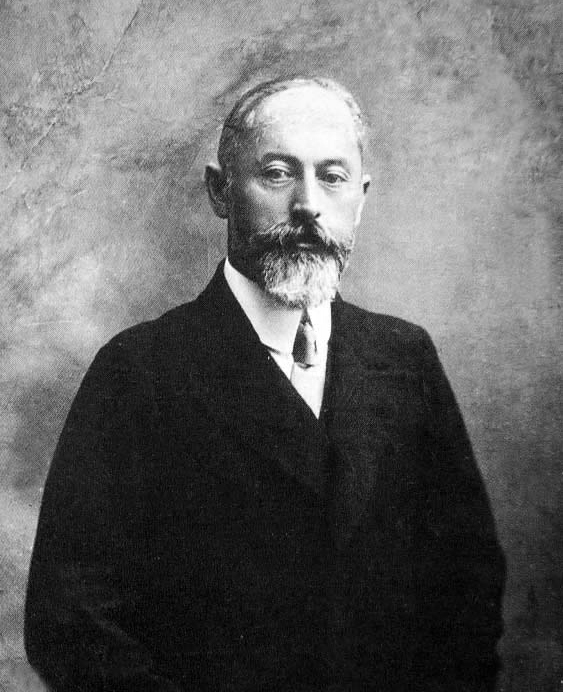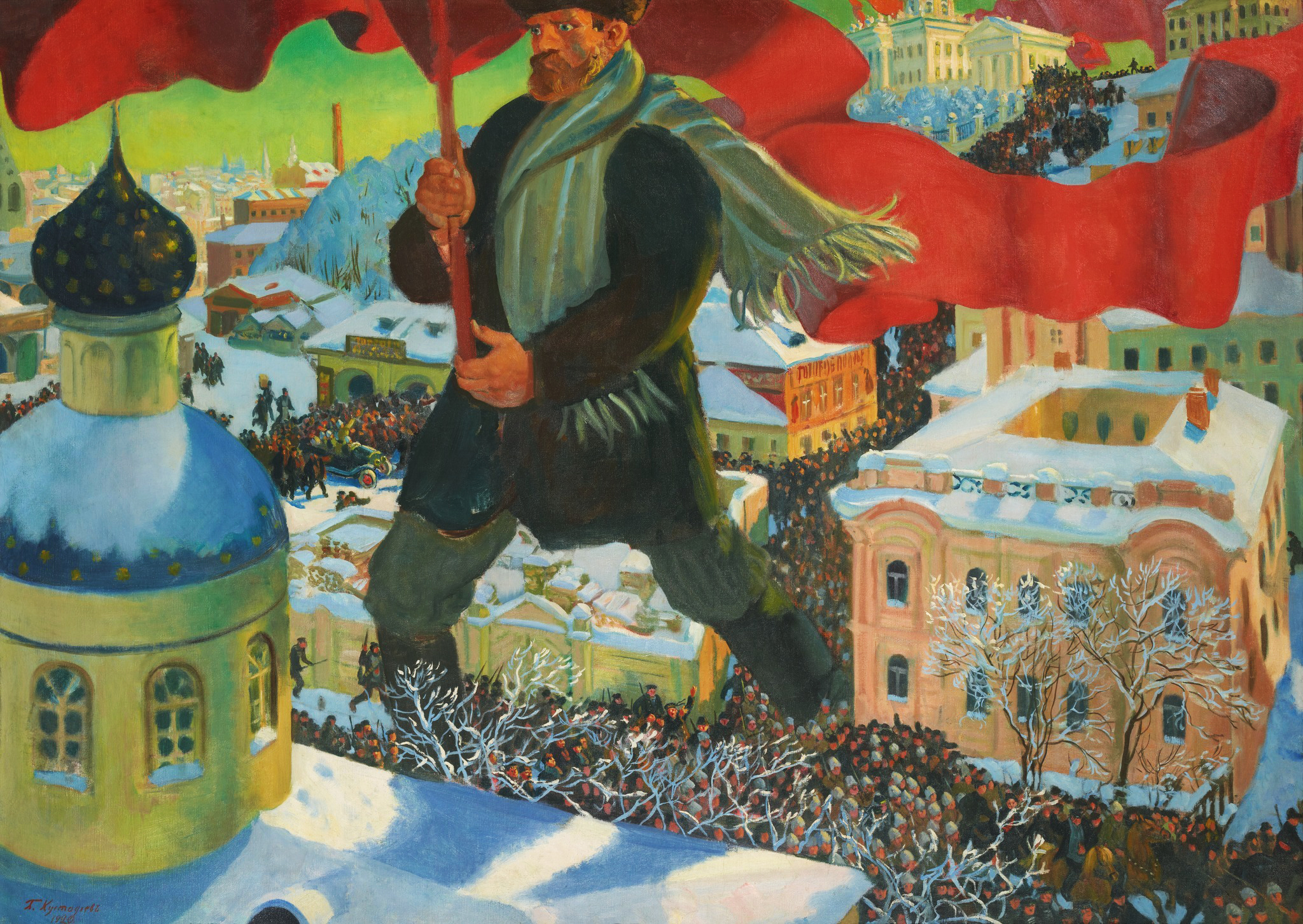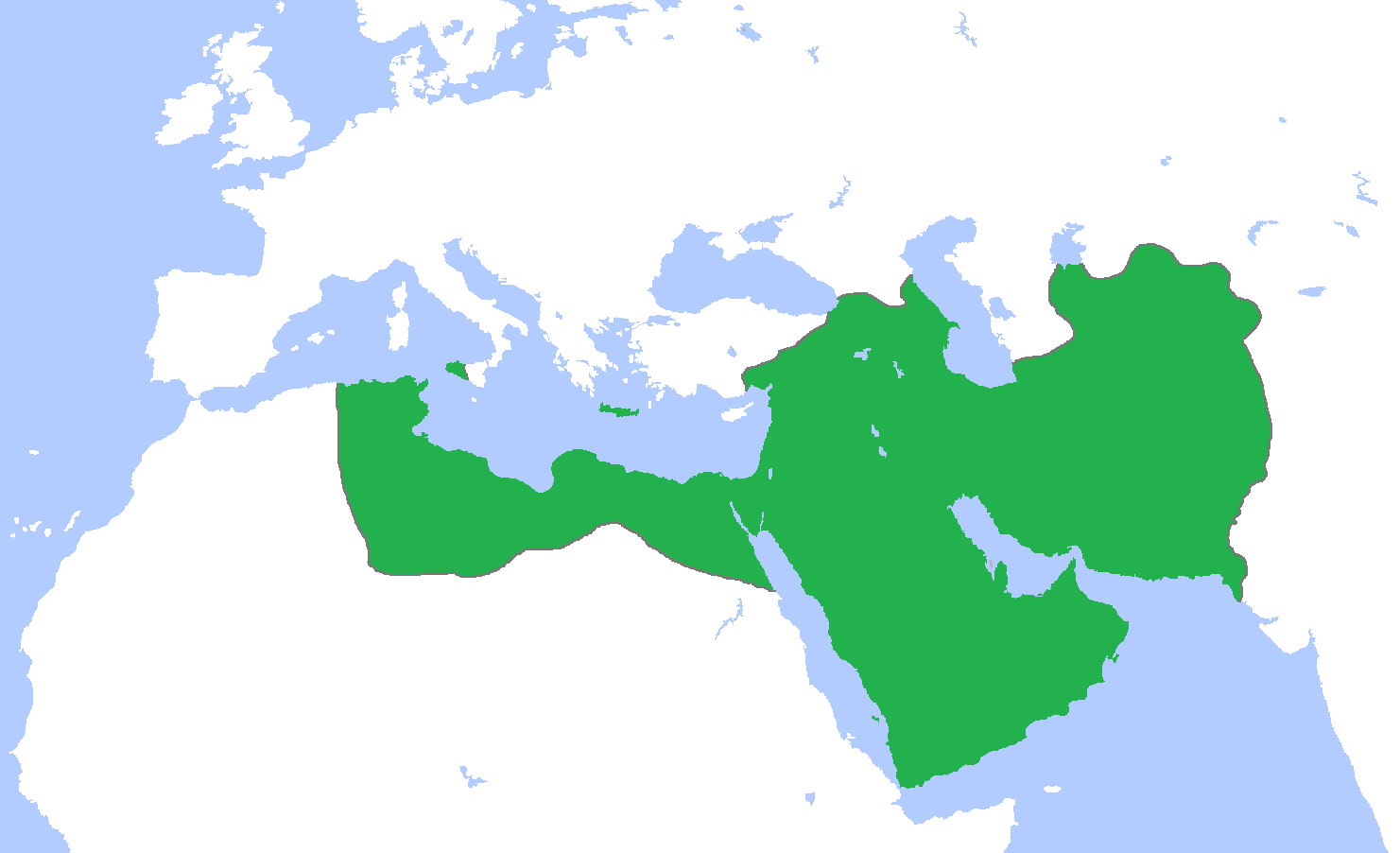|
Tashkent Soviet
The Tashkent Soviet was a public organisation set up in Tashkent during the Russian Revolution. It was established on 2 March 1917 at an inaugural meeting that consisted of thirty five workers from the Central Asian Railway. It was headed by a technician named I. I. Bel'kov. The following day, there was a meeting in the local Duma which set up an Executive Committee of Public Organisations to manage the "sociopolitical and economic life of the city". Only two Central Asians were involved in this committee, the lawyers Fayzulla Khodzhayev and Tashpolad Narbutabekov. Despite this failure to actively involve the majority population, many Central Asians had high hopes for the post-tsarist era. The poet Sirajiddin Makhdum Sidqi published poems of popular verse to popularise the revolution. Veterans of the Jadid resistance to the draft in 1916 such as Kojaev and Munawar Qari organised the Tashkand Muslim Council (Tashkand Shura-yi Islamiya). Tashkent was a divided city, with th ... [...More Info...] [...Related Items...] OR: [Wikipedia] [Google] [Baidu] |
Tashkent History 1913
Tashkent (, uz, Toshkent, Тошкент/, ) (from russian: Ташкент), or Toshkent (; ), also historically known as Chach is the capital and largest city of Uzbekistan. It is the most populous city in Central Asia, with a population of 2,909,500 (2022). It is in northeastern Uzbekistan, near the border with Kazakhstan. Tashkent comes from the Turkic ''tash'' and ''kent'', literally translated as "Stone City" or "City of Stones". Before Islamic influence started in the mid-8th century AD, Tashkent was influenced by the Sogdian and Turkic cultures. After Genghis Khan destroyed it in 1219, it was rebuilt and profited from the Silk Road. From the 18th to the 19th century, the city became an independent city-state, before being re-conquered by the Khanate of Kokand. In 1865, Tashkent fell to the Russian Empire; it became the capital of Russian Turkestan. In Soviet times, it witnessed major growth and demographic changes due to forced deportations from throughout the ... [...More Info...] [...Related Items...] OR: [Wikipedia] [Google] [Baidu] |
Russian Social Democratic Labour Party
The Russian Social Democratic Labour Party (RSDLP; in , ''Rossiyskaya sotsial-demokraticheskaya rabochaya partiya (RSDRP)''), also known as the Russian Social Democratic Workers' Party or the Russian Social Democratic Party, was a socialist political party founded in 1898 in Minsk (then in Northwestern Krai of the Russian Empire, present-day Belarus). Formed to unite the various revolutionary organizations of the Russian Empire into one party, the RSDLP split in 1903 into Bolsheviks ("majority") and Mensheviks ("minority") factions, with the Bolshevik faction eventually becoming the Communist Party of the Soviet Union. History Origins and early activities The RSDLP was not the first Russian Marxist group; the Emancipation of Labour group had been formed in 1883. The RSDLP was created to oppose the revolutionary populism of the Narodniks, which was later represented by the Socialist Revolutionary Party (SRs). The RSLDP was formed at an underground conference in Mins ... [...More Info...] [...Related Items...] OR: [Wikipedia] [Google] [Baidu] |
Mikhail Frunze
Mikhail Vasilyevich Frunze (russian: Михаил Васильевич Фрунзе; ro, Mihail Frunză; 2 February 1885 – 31 October 1925) was a Bolshevik leader during and just prior to the Russian Revolution of 1917. Born in the modern-day Kyrgyz Republic, he became active with the Bolsheviks and rose to the rank of a major Red Army commander in the Russian Civil War of 1917–1918. He is best known for defeating Baron Peter von Wrangel in Crimea. The capital of the Kirghiz SSR (modern Bishkek) was named in his honor from 1926 until 1991, when the Soviet Union was dissolved. Life and political activity Frunze was born in 1885 in Pishpek (now Bishkek in Kyrgyzstan), then a small Imperial Russian garrison town in the Kyrgyz part of Russian Turkestan (Semirechye Oblast). His father was a Bessarabian Romanian para-medic ( feldsher) (originally from the Kherson Governorate) and his mother was Russian.Martin McCauley, ''Who's Who in Russia Since 1900'', Routledge, 1997 ... [...More Info...] [...Related Items...] OR: [Wikipedia] [Google] [Baidu] |
Malleson Mission
The Malleson mission was a military action by a small autonomous force of British troops, led by General Wilfrid Malleson, operating against Bolshevik forces over large distances in Transcaspia (modern Turkmenistan) between 1918 and 1919. Background In 1918 Russian Turkestan was in chaos. The Bolshevik Tashkent Soviet was under attack from various groups, including cossacks, who had claimed independence for their respective regions. In addition, there were dealings between the White Russian forces and the British. Geopolitically, from the British point of view, the area was of interest to them because of its proximity to British India and Persia and their general sphere of influence. While Russia remained an ally this was not an issue for the British, but with the Bolshevik revolution of 1917, it became one. To add to the complex situation, around 28,000 German and Austro-Hungarian soldiers were in the area, as prisoners of war. The mission Concerned about the Bolshevik ... [...More Info...] [...Related Items...] OR: [Wikipedia] [Google] [Baidu] |
Transcaspian Government
The Transcaspian Government (1918 - July 1919) was a "Menshevik- Socialist Revolutionary" coalition set up by the Railway workers of the Trans-Caspian Railway in 1918. It was based at Ashgabat, Transcaspian Oblast. Origin Autonomous sentiments were developing amongst the local Turkmen population, with the formation of the Turkmen National Army (TNA) in February 1918. Concerned about this, the Bolshevik Ashgabat Soviet appealed to , leader of the Tashkent Soviet for military support, and declared it would carry out a census of all arms-bearing men in the Russian majority town on 17 June 1918. However, this sparked off two days of rioting. The Tashkent Soviet dispatched some Red Guards led by V. Frolov and a Cheka contingent who arrived on 24 June and disarmed the Turkmen Cavalry Squadron, which was the core of the TNA. Frolov declared martial law and personally shot the five members of a delegation of railwaymen that had tried to present a petition to him. He proceeded to Ki ... [...More Info...] [...Related Items...] OR: [Wikipedia] [Google] [Baidu] |
Socialist Revolutionary Party
The Socialist Revolutionary Party, or the Party of Socialist-Revolutionaries (the SRs, , or Esers, russian: эсеры, translit=esery, label=none; russian: Партия социалистов-революционеров, ), was a major political party in late Imperial Russia, and both phases of the Russian Revolution and early Soviet Russia. The SRs were agrarian socialists and supporters of a democratic socialist Russian republic. The ideological heirs of the Narodniks, the SRs won a mass following among the Russian peasantry by endorsing the overthrow of the Tsar and the redistribution of land to the peasants. The SRs boycotted the elections to the First Duma following the Revolution of 1905 alongside the Russian Social Democratic Labour Party, but chose to run in the elections to the Second Duma and received the majority of the few seats allotted to the peasantry. Following the 1907 coup, the SRs boycotted all subsequent Dumas until the fall of the Tsar in the Febru ... [...More Info...] [...Related Items...] OR: [Wikipedia] [Google] [Baidu] |
Mensheviks
The Mensheviks (russian: меньшевики́, from меньшинство 'minority') were one of the three dominant factions in the Russian socialist movement, the others being the Bolsheviks and Socialist Revolutionaries. The factions emerged in 1903 following a dispute within the Russian Social Democratic Labour Party (RSDLP) between Julius Martov and Vladimir Lenin. The dispute originated at the 2nd Congress of the RSDLP, ostensibly over minor issues of party organization. Martov's supporters, who were in the minority in a crucial vote on the question of party membership, came to be called ''Mensheviks'', derived from the Russian ('minority'), while Lenin's adherents were known as ''Bolsheviks'', from ('majority'). Despite the naming, neither side held a consistent majority over the course of the entire 2nd Congress, and indeed the numerical advantage fluctuated between both sides throughout the rest of the RSDLP's existence until the Russian Revolution. The split pro ... [...More Info...] [...Related Items...] OR: [Wikipedia] [Google] [Baidu] |
Bolsheviks
The Bolsheviks (russian: Большевики́, from большинство́ ''bol'shinstvó'', 'majority'),; derived from ''bol'shinstvó'' (большинство́), "majority", literally meaning "one of the majority". also known in English as the Bolshevists,. It signifies both Bolsheviks and adherents of Bolshevik policies. were a far-left, revolutionary Marxist faction founded by Vladimir Lenin that split with the Mensheviks from the Marxist Russian Social Democratic Labour Party (RSDLP), a revolutionary socialist political party formed in 1898, at its Second Party Congress in 1903. After forming their own party in 1912, the Bolsheviks took power during the October Revolution in the Russian Republic in November 1917, overthrowing the Provisional Government of Alexander Kerensky, and became the only ruling party in the subsequent Soviet Russia and later the Soviet Union. They considered themselves the leaders of the revolutionary proletariat of Russia. Their bel ... [...More Info...] [...Related Items...] OR: [Wikipedia] [Google] [Baidu] |
Tashkent The Building Of Town Council 02
Tashkent (, uz, Toshkent, Тошкент/, ) (from russian: Ташкент), or Toshkent (; ), also historically known as Chach is the capital and largest city of Uzbekistan. It is the most populous city in Central Asia, with a population of 2,909,500 (2022). It is in northeastern Uzbekistan, near the border with Kazakhstan. Tashkent comes from the Turkic ''tash'' and ''kent'', literally translated as "Stone City" or "City of Stones". Before Islamic influence started in the mid-8th century AD, Tashkent was influenced by the Sogdian and Turkic cultures. After Genghis Khan destroyed it in 1219, it was rebuilt and profited from the Silk Road. From the 18th to the 19th century, the city became an independent city-state, before being re-conquered by the Khanate of Kokand. In 1865, Tashkent fell to the Russian Empire; it became the capital of Russian Turkestan. In Soviet times, it witnessed major growth and demographic changes due to forced deportations from throughout the Sovi ... [...More Info...] [...Related Items...] OR: [Wikipedia] [Google] [Baidu] |
Muslim
Muslims ( ar, المسلمون, , ) are people who adhere to Islam, a monotheistic religion belonging to the Abrahamic tradition. They consider the Quran, the foundational religious text of Islam, to be the verbatim word of the God of Abraham (or ''Allah'') as it was revealed to Muhammad, the main Islamic prophet. The majority of Muslims also follow the teachings and practices of Muhammad (''sunnah'') as recorded in traditional accounts ('' hadith''). With an estimated population of almost 1.9 billion followers as of 2020 year estimation, Muslims comprise more than 24.9% of the world's total population. In descending order, the percentage of people who identify as Muslims on each continental landmass stands at: 45% of Africa, 25% of Asia and Oceania (collectively), 6% of Europe, and 1% of the Americas. Additionally, in subdivided geographical regions, the figure stands at: 91% of the Middle East–North Africa, 90% of Central Asia, 65% of the Caucasus, 42% of South ... [...More Info...] [...Related Items...] OR: [Wikipedia] [Google] [Baidu] |
Tashkent
Tashkent (, uz, Toshkent, Тошкент/, ) (from russian: Ташкент), or Toshkent (; ), also historically known as Chach is the capital and largest city of Uzbekistan. It is the most populous city in Central Asia, with a population of 2,909,500 (2022). It is in northeastern Uzbekistan, near the border with Kazakhstan. Tashkent comes from the Turkic ''tash'' and ''kent'', literally translated as "Stone City" or "City of Stones". Before Islamic influence started in the mid-8th century AD, Tashkent was influenced by the Sogdian and Turkic cultures. After Genghis Khan destroyed it in 1219, it was rebuilt and profited from the Silk Road. From the 18th to the 19th century, the city became an independent city-state, before being re-conquered by the Khanate of Kokand. In 1865, Tashkent fell to the Russian Empire; it became the capital of Russian Turkestan. In Soviet times, it witnessed major growth and demographic changes due to forced deportations from throughout the ... [...More Info...] [...Related Items...] OR: [Wikipedia] [Google] [Baidu] |








.jpg)